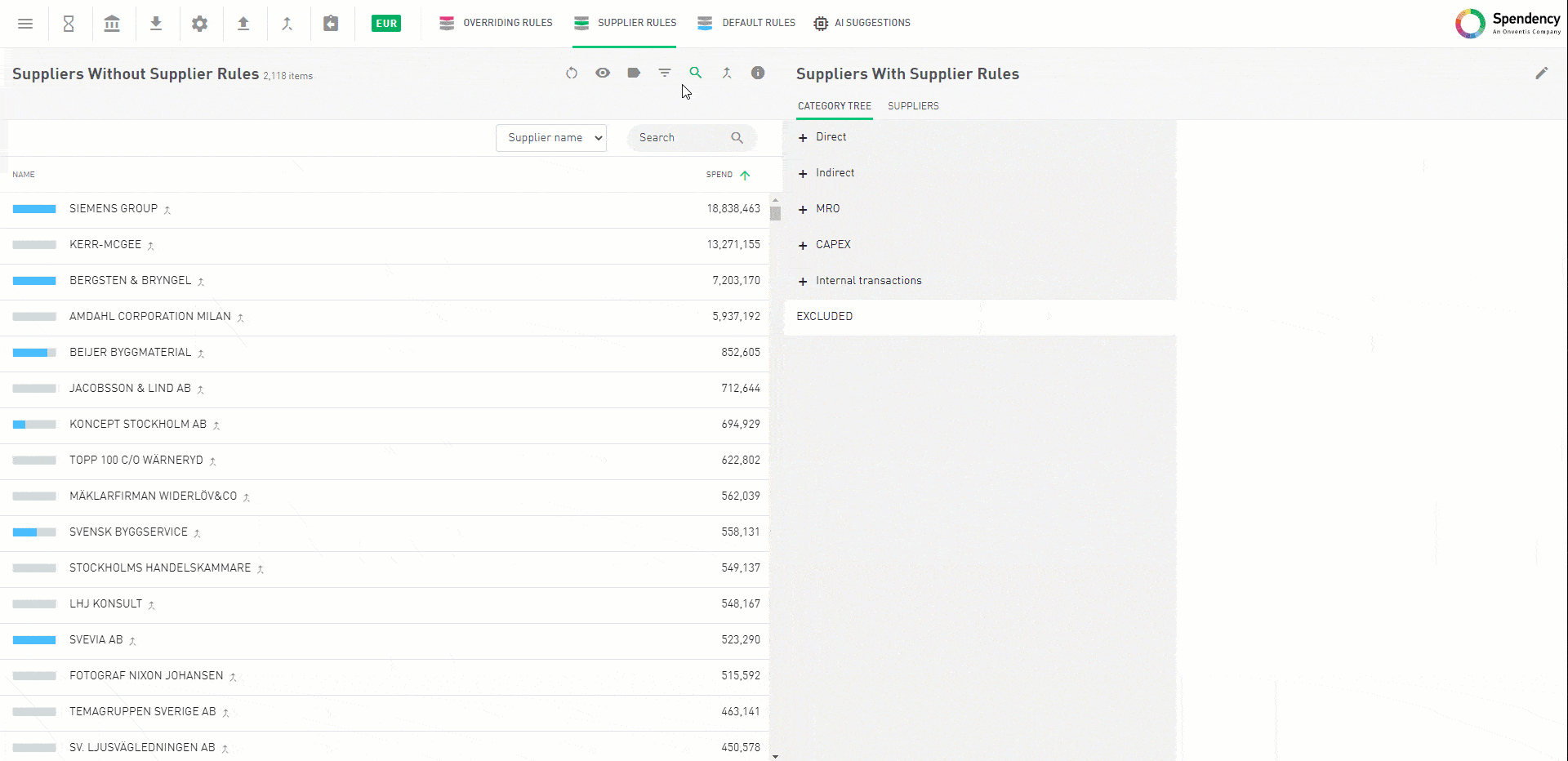Categorize suppliers with small spend amounts
Within purchasing organisations, it is common that 80 % of spend comes from about 20 % of the number of suppliers. If you have categorised 80 % of the suppliers, you have come a long way in the categorisation process. The remaining suppliers, usually many in numbers with low spend amounts, also called the tail spend, can be time-consuming to categorise. Default rules are then helpful because they aim to categorise the tail spend without processing each individual supplier.
The rule works in the same way as a overriding rule. It affects all suppliers and is usually based on account numbers. But the most significant difference is that it has the lowest priority in the decision order, and it will only apply when there is no supplier rule.
When a Default Rule has categorised a supplier, the categorisation status will be blue. If the supplier gets be categorised with a Supplier Rule, the Default Rule will disappear because it has the lowest priority in the decision order.

Note that a supplier can be categorised into different categories as the supplier may be accounted to multiple account numbers. Click on the Default Rules button under the categorisation page to create a new rule, select the account, and select the appropriate category.

Create default rule based on text conditions
It is also possible to create Default Rules with the help of text. For example, all suppliers that contains the word Hotel shall be categorised into the Hotel & Conferences category. Instead of using the GL account option, press on Advance condition. You can also limit the rule period validity for a specific date period:
